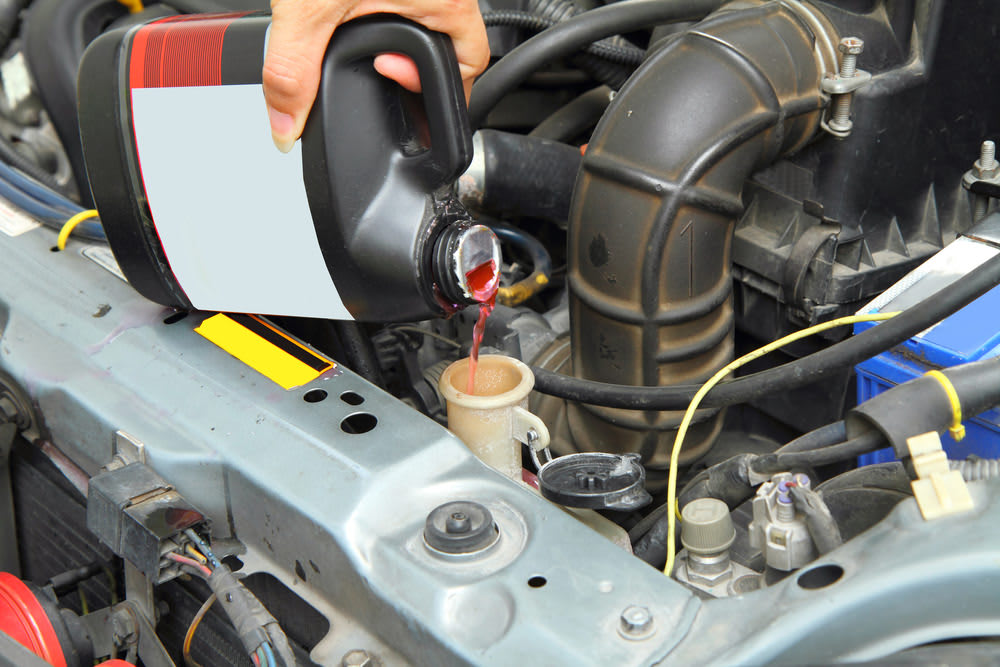

"Coolant" is a term used to refer to radiator fluid. The purpose of coolant is to circulate through the engine compartment of a vehicle to dispel some of the heat that’s manufactured through the combustion process. It flows through tubes or hoses into the radiator.
What does the radiator do?
A radiator is the cooling system in a vehicle. It is designed to transfer heat from the hot coolant that flows through it to the air blown through it by the fan. Radiators operate by pushing hot water from the engine block through hoses that allow the heat from the water coolant to dispel. Once the liquid is cooled down, it is returned to the engine block to absorb more heat.
The radiator is usually mounted in the front of a vehicle, behind the grill, which allows it to take advantage of the air intake that happens as the vehicle is being driven.
How often should I top off my coolant?
Anytime coolant loss happens, it is important to replace the coolant as soon as possible. If the radiator does not have enough coolant, it may not be cooling the engine down properly, and engine damage could result from overheating. Coolant loss is often first noticed when the vehicle’s thermometer registers a hotter than average reading. Typically, coolant loss is caused by a leak. A leak can be either internal, such as a leaky gasket, or external, such as a hose failure or crack in the radiator. An external leak is usually determined by a puddle of coolant underneath the vehicle. Coolant loss can also be caused by a leaky or improperly sealed radiator cap allowing the super-heated coolant to evaporate.
Failure to top off the coolant could result in catastrophic damage to a vehicle. If you’re noticing that you have to keep refilling the coolant, it’s important to have a licensed mechanic inspect the cooling system to figure out why the coolant loss keeps occurring.



